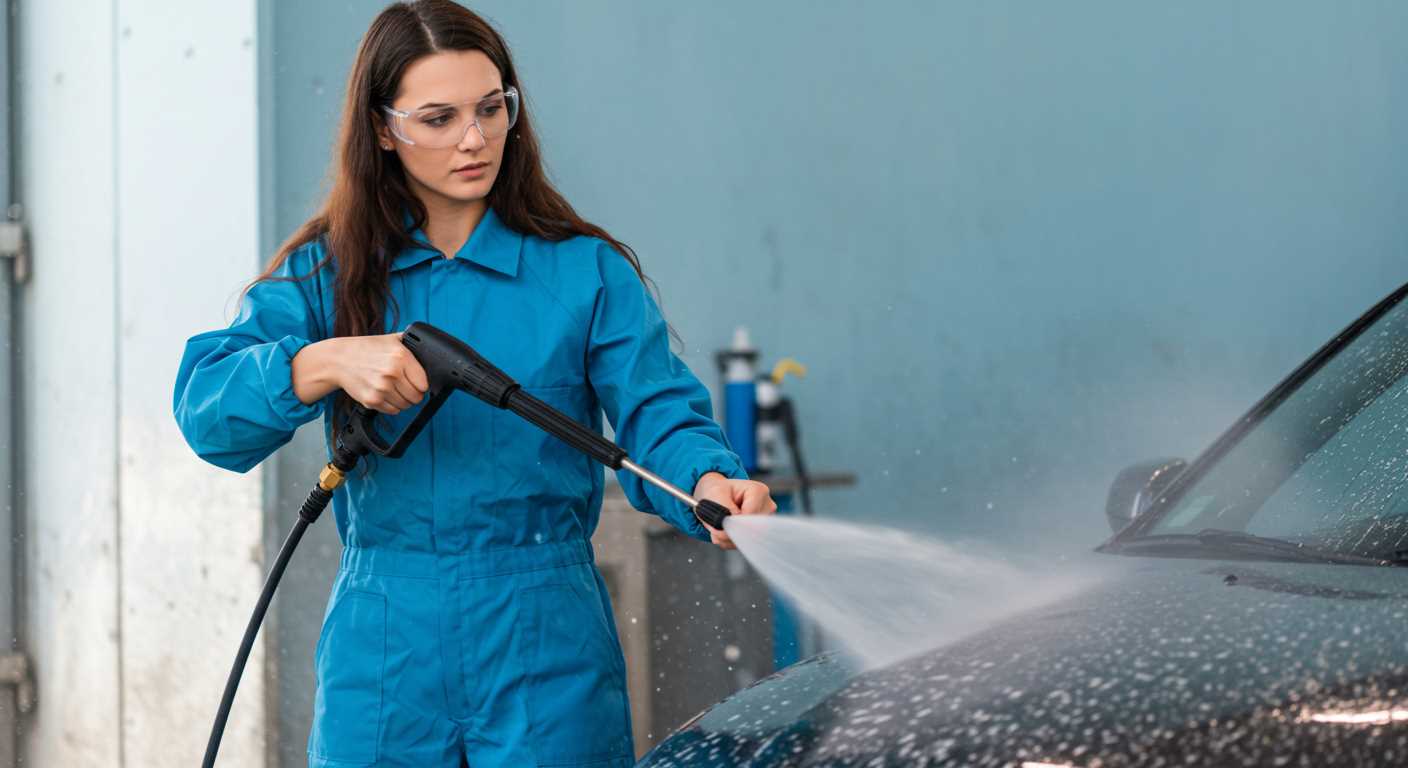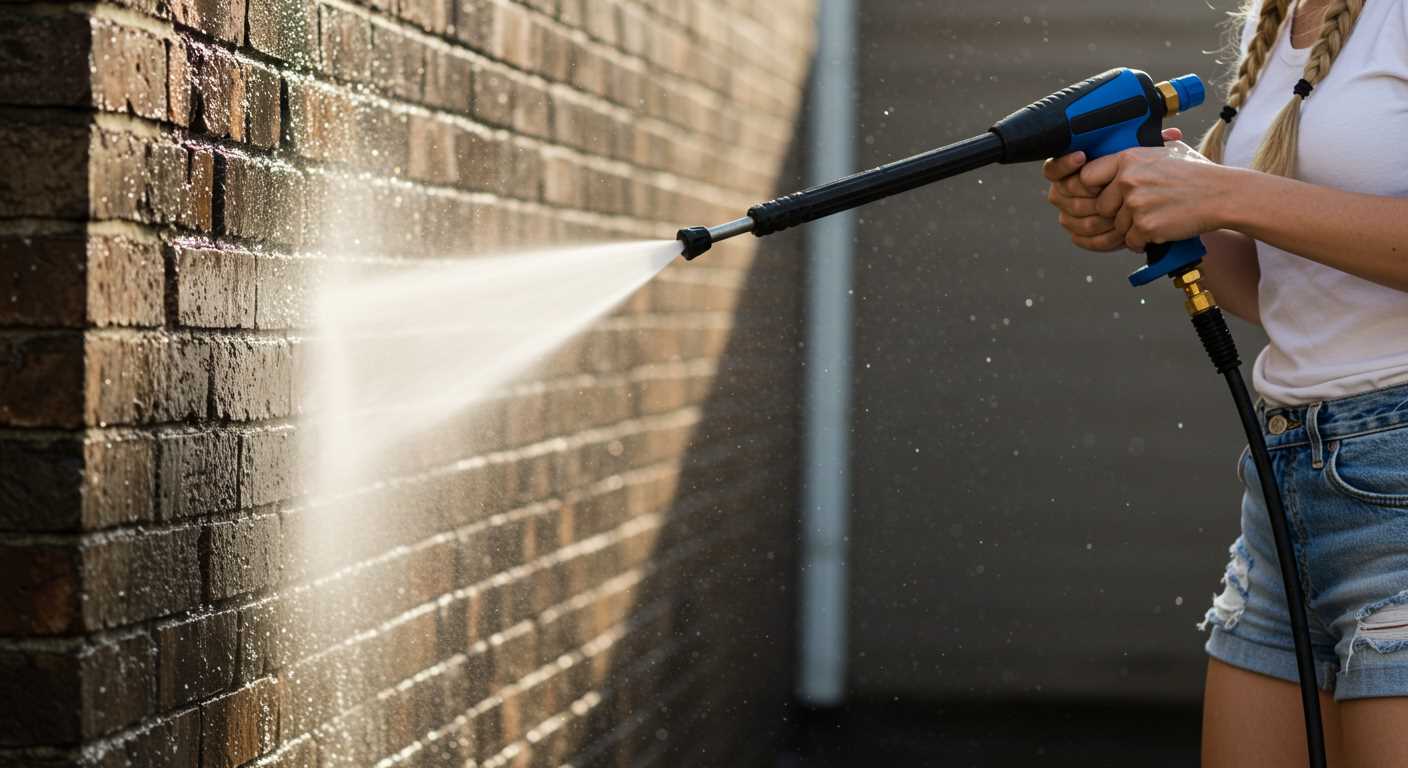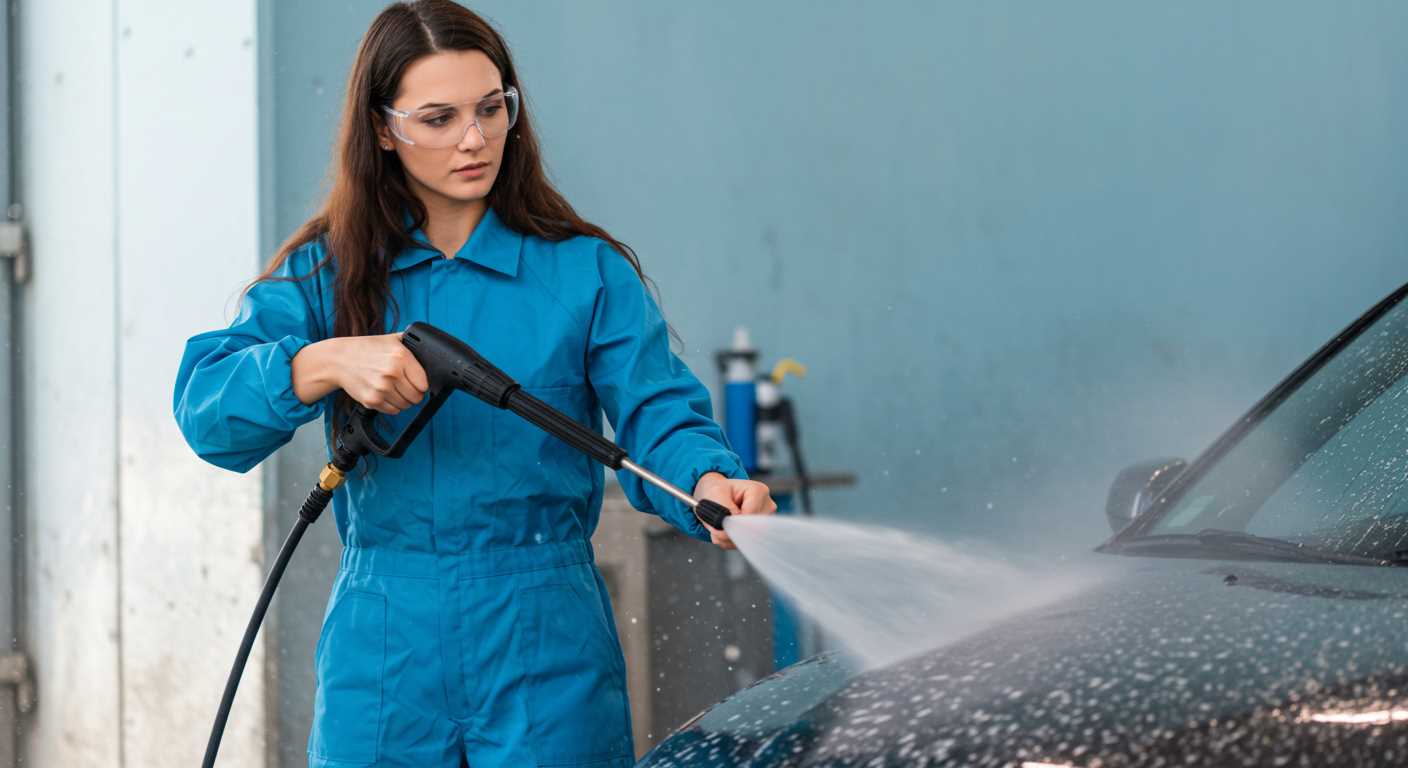




Before you engage in any cleaning task with high-powered equipment, ensure you conduct a thorough examination of potential hazards. I recall a time when I was demonstrating a new model, and a colleague overlooked the importance of checking the hose connections. A simple oversight led to a dangerous situation, emphasising the need for vigilance.
First and foremost, inspect the area where the operation will take place. Look for uneven surfaces, obstacles, or any debris that could pose a tripping hazard. I remember a job site that seemed clear at first glance, but hidden beneath the foliage were rocks that caused a colleague to stumble. Knowing your environment can prevent accidents.
Next, consider personal protective equipment (PPE). During my years of experience, I’ve seen too many instances where individuals failed to wear appropriate gear like goggles, gloves, and non-slip footwear. I once worked alongside someone who thought a simple pair of sunglasses was sufficient. When water and debris flew around, it wasn’t long before they regretted their choice. Always prioritise safety gear to protect yourself from potential injuries.
Another aspect that should not be overlooked is the equipment itself. Regular maintenance checks are crucial. I recall a situation where a machine malfunctioned mid-job due to a lack of servicing, causing not only downtime but also a minor injury. Ensure that all components are in good working order before starting, focusing on hoses, nozzles, and power sources.
Lastly, have a clear plan for emergency situations. It’s wise to establish protocols and ensure everyone involved knows what to do if an accident occurs. I learned this the hard way when a minor injury took everyone by surprise, and chaos ensued. A well-documented emergency plan can save time and potentially lives.
Identifying potential hazards associated with pressure washing
Start with evaluating the workspace. Look for overhead power lines, low-hanging branches, and uneven ground that could lead to slips or falls. I remember a job where a colleague didn’t notice a low cable and ended up causing a power outage. Always check your surroundings.
Water sources can introduce risks, especially if chemicals are involved. Ensure that any detergents or cleaning agents are stored properly and away from public access. On one occasion, I witnessed a situation where a cleaner accidentally mixed incompatible chemicals, leading to a hazardous reaction. Label everything clearly.
Personal safety gear is non-negotiable. I’ve seen too many workers without adequate protection. Always wear goggles, gloves, and non-slip footwear. Protecting yourself from high-pressure water jets and possible debris is paramount. One slip without the right shoes led to a nasty injury on my part during a demonstration.
Noise levels can be surprisingly high. Prolonged exposure to loud machinery can cause hearing damage. I always use ear protection when operating equipment for extended periods. It’s an easy precaution that can save you from future problems.
Electrical hazards are also significant. Ensure that all equipment is properly grounded and that extension cords are rated for outdoor use. I’ve experienced equipment failures due to faulty wiring. Inspect cables regularly for frays or damage.
Puddles and standing water can create slip hazards. If you’re working in a wet environment, clear any water away before starting. I recall a job where a simple oversight led to a slip that could have been avoided with a quick inspection.
| Hazard | Recommendation |
|---|---|
| Overhead power lines | Inspect workspace for overhead hazards. |
| Chemical exposure | Store and label all chemicals properly. |
| Personal injury | Always wear appropriate safety gear. |
| Noise | Use ear protection during operation. |
| Electrical risks | Check all equipment for proper grounding. |
| Slip hazards | Clear standing water before starting work. |
Evaluating the Risks of High-Pressure Water Jets
Always start by assessing the potential impact of high-pressure water jets on various surfaces and operators. Here are the key considerations:
- Jet Velocity: Understand the speed at which water exits the nozzle. High velocities can cause severe injuries. Ensure all users are trained to handle the equipment safely.
- Water Temperature: Hot water jets can lead to burns. Make certain that operators wear appropriate protective gear to mitigate thermal injuries.
- Spray Angle: Different nozzles produce varying spray patterns. A narrow angle increases the risk of penetrating skin or damaging materials. Use the correct nozzle for the task.
- Distance from Surface: The closer the nozzle to the surface, the higher the risk of injury and damage. Maintain a safe distance during operation, especially with powerful machines.
- Environmental Factors: Assess the surroundings for hazards such as electrical sources or slippery surfaces. Wet areas can lead to slips, and water near electrical equipment poses serious dangers.
During my time in the industry, I encountered numerous situations where underestimating these factors led to injury or damage. For instance, one operator ignored the recommended distance and suffered a deep laceration when the jet struck his arm. This incident reinforced the importance of operator training and adherence to safety protocols.
Regular maintenance checks on the equipment are also crucial. Ensure hoses and nozzles are free from cracks and leaks, as these can alter the jet’s behaviour and lead to unforeseen accidents.
- Protective Equipment: Equip operators with gloves, goggles, and protective clothing. This simple step can significantly reduce the risk of injury.
- Emergency Procedures: Establish clear protocols for addressing accidents. Quick response can prevent further injury and complications.
In one instance, a colleague experienced an electrical shock while using a high-pressure unit near a power line. This highlighted the need for proper site assessments and training regarding the safe operation of the equipment in various environments.
Ultimately, a thorough evaluation of these elements can drastically reduce the likelihood of accidents and injuries associated with high-velocity water jets. Prioritising safety and regular training will lead to a more secure working environment.
Assessing the Environment for Safety Concerns
Before starting any cleaning task, I always take a moment to evaluate the surroundings. This step can prevent accidents and ensure a smoother operation. Check the area for potential obstacles like loose debris, uneven surfaces, or overhead power lines. These hazards can lead to slips, trips, or even electrical accidents if water comes into contact with live wires.
Surface Conditions
Inspect the surfaces you’ll be working on. Wet leaves, oil spills, or moss can create slippery zones. I once had a colleague who almost lost his footing on a slick driveway while trying to clean it. It’s wise to clear these away before beginning. Additionally, some materials, like wood or certain types of masonry, may react poorly to high-pressure water. Knowing these details can save you from damaging surfaces or compromising your safety.
Environmental Factors
Weather plays a significant role. Avoid working in rain or strong winds, as they can affect your control over the equipment. I recall a day when a sudden gust of wind sent debris flying right into my path while I was operating a unit. Always check the forecast and adjust your schedule accordingly. Also, consider the proximity of people, pets, or wildlife. Keeping a safe distance from bystanders during operation is crucial to prevent injuries from flying debris or splashes.
Lastly, ensure that the area has adequate drainage. Standing water can create hazards not only for you but for anyone nearby. Proper planning and environmental assessment can make a considerable difference in how smoothly and safely you complete your task.
Reviewing Personal Protective Equipment (PPE) Requirements
Always wear appropriate gear when operating high-pressure cleaning devices. Safety glasses or goggles are non-negotiable; they protect your eyes from flying debris and high-velocity water. I recall a time when a colleague neglected to wear eye protection and ended up with a small piece of stone lodged in his eye. A painful reminder of the importance of safeguarding oneself.
Protective gloves should be made from durable, water-resistant materials. I’ve seen operators suffer from skin abrasions and chemical burns due to inadequate hand protection. When using detergents, opt for gloves designed to resist chemicals. It’s a small investment for your health.
Non-slip footwear is another critical aspect. Wet surfaces can be treacherous, and slipping while handling equipment can lead to serious injuries. I learned this the hard way during a job when a colleague lost his footing and fell while manoeuvring a heavy hose. Ensure that your shoes provide both grip and protection.
Long-sleeved shirts and trousers are advisable to shield your skin from both the high-pressure water and any chemicals in use. On one occasion, I had a minor spray on my arm while cleaning a patio, and the resulting irritation was a hassle. Proper clothing can help avoid such situations.
Hearing protection may also be necessary, particularly in noisy environments. The sound of some machines can exceed safe levels, leading to hearing damage over time. I remember working on a project where the constant noise made it difficult to communicate; after that, I always kept earplugs handy.
Lastly, consider a face shield for intense jobs, especially when dealing with stubborn stains and high-pressure settings. I’ve found that wearing a shield helps to prevent any unexpected splashes from reaching my face. Always remember that safety should never be an afterthought.
Investing in the right equipment ensures not just compliance but also enhances efficiency. If you’re thinking of starting a business in this field, look for a reliable pressure washer for starting a business which supports safe operations.
Documenting Operator Training and Competency Levels
Training records for operators should be meticulous and easily accessible. I recall a situation where a team member was not adequately trained on the specific equipment being used, leading to a significant mishap. To prevent such incidents, establish a structured training programme that covers both theoretical knowledge and practical skills. This should be documented thoroughly.
Components of Training Documentation
First, create a detailed curriculum that outlines all necessary training modules. Each module should specify objectives, duration, and evaluation methods. After completing training, conduct assessments to gauge competency. Document results and retain them in individual operator files. This not only provides a clear record of training but also highlights areas needing further development.
Regular Refresher Courses
Another key aspect is scheduling regular refresher courses. I’ve found that even experienced operators can benefit from periodic updates on safety protocols and equipment handling. Maintain a log of these sessions, noting attendance and feedback. This practice reinforces knowledge and ensures operators stay current with best practices, significantly reducing the likelihood of accidents.
Establishing Emergency Procedures and First Aid Measures

Ensure that every team member is familiar with emergency protocols before starting any cleaning task. During my time in the field, I witnessed how critical it is to have quick access to emergency contacts and procedures. A well-displayed emergency action plan can save valuable time in stressful situations.
First Aid Kit Accessibility
Keep a fully stocked first aid kit in proximity to the work area. This kit should contain sterile dressings, antiseptic wipes, adhesive bandages, and suitable eye wash solutions, as injuries can occur unexpectedly. Regularly check the contents to ensure everything is up to date. I once had a colleague suffer a minor laceration while cleaning a tough spot, and having the right supplies on hand made all the difference.
Training and Drills
Conduct routine training sessions focusing on emergency response and first aid. Incorporate scenario-based drills to prepare operators for various incidents, such as slips, falls, or equipment malfunctions. In my experience, role-playing can enhance understanding and retention of emergency protocols. Practising these procedures ensures that everyone knows their roles and can react swiftly, reducing panic and confusion in real situations.
Implementing Maintenance Protocols for Washing Equipment
Schedule regular inspections of the machine to ensure all components are functioning correctly. In my experience, I’ve found that neglecting this step leads to unexpected breakdowns, which can be costly and time-consuming. Check hoses for cracks and leaks, and replace them as necessary to avoid accidents that can arise from high-pressure failures.
Cleaning and Lubricating Parts
Cleaning the nozzles and filters is a key aspect of upkeep. Blocked nozzles can alter spray patterns and reduce efficiency. I remember a situation where a colleague had to halt work because a simple clogged nozzle caused significant delays. Keep lubricants on hand for moving parts to prevent wear and tear. Regularly lubricating the pump and other components not only extends the life of the equipment but also maintains optimal performance.
Storing Equipment Properly
Ensure that machines are stored in a dry, sheltered location to protect them from environmental elements. I once encountered a pressure cleaner that had severe rust damage due to improper storage. Using protective covers can also shield equipment from dust and debris. Always drain water from the system before storage to prevent freezing in cold conditions, which can crack components and lead to expensive repairs.
For those who need to multitask in the kitchen, you might find it helpful to check out how long to put potatoes in pressure cooker for a quick meal while you manage your maintenance schedule.
FAQ:
What are the key components of a pressure washer risk assessment?
A thorough risk assessment for a pressure washer should include several critical components: Firstly, identify the hazards associated with the equipment, such as high-pressure water jets, electrical components, and the potential for slips and falls. Secondly, assess who might be harmed and how, including operators, bystanders, and the environment. Thirdly, evaluate the existing control measures in place, such as protective gear and safety protocols. Finally, document the findings and create an action plan to mitigate identified risks, ensuring that all staff are trained and aware of safety procedures.
How can I identify hazards related to pressure washing?
Identifying hazards in pressure washing involves a careful examination of the equipment and the working environment. Common hazards include the high-pressure water jets that can cause serious injury, electrical hazards from the machine’s power source, and the risk of slips due to wet surfaces. Additionally, consider the potential for flying debris when cleaning surfaces at high pressure. Conducting a walk-through of the work area and consulting with operators about their experiences can help uncover less obvious risks.
What training is necessary for staff using pressure washers?
Staff operating pressure washers should receive specific training that covers several key areas. They need to understand how to operate the equipment correctly, including starting, stopping, and adjusting pressure settings. Training should also include safety practices such as the use of personal protective equipment (PPE) like goggles, gloves, and non-slip footwear. Additionally, operators should be informed about potential hazards and emergency procedures in case of an accident. Regular refresher courses can help maintain safety awareness.
What should be done if risks are identified during the assessment?
If risks are identified during the pressure washer risk assessment, it is crucial to take immediate action to address them. Start by prioritising the risks based on their severity and likelihood of occurrence. Implement control measures to mitigate these risks, which could include updating safety protocols, enhancing training, or improving equipment maintenance. Document all changes made and communicate them to all relevant personnel. Regularly reviewing and updating the risk assessment can help ensure ongoing safety.
Are there specific regulations that govern pressure washing safety?
Yes, there are specific regulations and guidelines that govern pressure washing safety, which may vary by region. These regulations typically focus on the safe operation of equipment, the use of appropriate PPE, and the training of personnel. For example, the Health and Safety Executive (HSE) in the UK provides guidelines that outline the responsibilities of employers to ensure a safe working environment. It’s essential to stay informed about local regulations and incorporate them into your risk assessment and safety practices.


.jpg)
.jpg)
.jpg)


